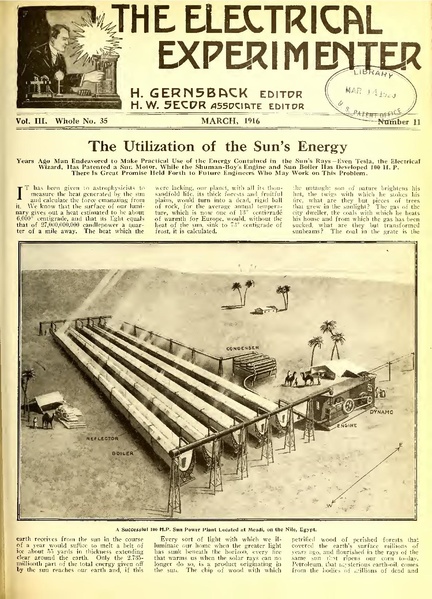You can run a generator on an open-cycle hot air engine. This is a heat engine that gets energy from the expansion of air when it heats up.
The major issue is getting cold intake air. You can use a ground-coupled heat exchanger for that. Specifically a thermal labyrinth. The air is drawn thru a long path underground and cools in the process, basically.
Heating up the air is depressingly simple in a desert. Just have some some structure made of metal above ground where sun can shine on it and it can change heat with the local air. If you have mirrors you can focus the sunlight for much higher temperatures. Solar cooking ovens are a thing so the mirror and design wouldn't need to be that good. For a more serious design you can use a parabolic through.
For the viability of all this the best comparison is probably ocean thermal energy conversion.
The very good news is that the conception and early tests are pretty much in the desired time frame, so somebody coming up with the idea of adapting it to a desert would be viable. Thermal labyrinths are ancient technology and heat engines were largely invented during the 19th century, so that all works as well.
The good news is that OTEC has been tested and it does actually work, so the desert version would probably as well. How well is bit hard to say since the working fluids and many other details differ. The differences kind of balance out but you'd have to do actual numbers to know how well and that would require an actual design. Maybe an actual physical experiment at significant scale even.
The bad news is that OTEC never has made a breakthrough. It never really succeeded in competing with coal and oil. And the desert version would probably be more problematic. While this proposal basically uses the entire desert for capturing the solar energy and so solves some of the density problems of other types of solar power, it still cannot compete with coal on density and thermal labyrinth would be more upfront work than pumping up cold sea water as in OTEC. So the economic potential would be limited.
That said in this time frame cheap labor might be more accessible than imported fuels. Or the government might simply worry about being dependent on imported coal in case of a war. Or about maintaining the logistics of transporting the fuel.
And there are uses other than electricity where this might work better. This system already pumps both cold and hot air, so it would only need some valves and thermostats to give you a self powered air conditioning system. In a hot desert that is not nothing.
Likewise something like irrigation by pumping up ground water would be better fit than electricity generation. A farmer might be happier with spending time to build a thermal labyrinth than with spending money to buy coal or oil and intermittent and low density works fine for irrigation.
So the actual answer would be split. Utilize, yes. Replace coal, no.



